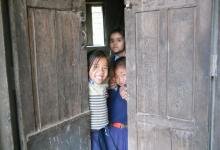The Benefits of Migration in Filipino Sports
A Filipino migrant in Australia shares with asia! how overseas Filipinos of mixed heritage contribute to sports and national pride.
Earlier this year, a video on YouTube of Prof Winnie Monsod delivering her traditional and much awaited last lecture for the semester went viral. In it, she appealed to her students at the University of the Philippines, my alma mater, to remain in the country after graduating.
Recently, I came across a bunch of fresh migrants to South Australia, my home since 2005. I came here on a spouse visa because of my wife, a Filipina, whose family migrated here back in the mid-80s. Unlike me, these recent arrivals came here on a skilled or employer sponsored visa. Some of them ironically were contemporaries of mine at college, but I only made their acquaintance here through mutual friends.
Having been former students of hers, former senator Winnie Monsod’s video inevitably came up in conversation. We concluded that perhaps after paying our dues during the early part of our working lives, the country had benefited enough from our toil and talents. Many of us would have preferred to stay, but in order to provide a better environment for our kids, we reluctantly decided to make the move.
The irony is that despite having lived in two countries, you end up never really fitting in either one.
The experience of immigration can be a bit harrowing and lonely. Not only do people back home look at you differently when you return, but you also feel a bit left out among the locals of your host country. The irony is that despite having lived in two countries, you end up never really fitting in either one.
Prof Monsod’s lecture spurred a debate within the global Filipino community about the merits of migration. Many supported her sentiments about staying home. Some say that those who leave the country permanently are turning their backs on it and have lost their sense of patriotism.
Yet, the Philippine national football squad, appropriately named The Azkals, demonstrates the benefits of such migration. Of the 22 athletes that comprise this team, eight of them or more than a third, are of mixed national origin (mongrels in other words as their name suggests which means street dogs in Tagalog).
You have the five players of Filipino-English descent: the Younghusbands, Phil (aged 23) and James (aged 24) who play forward and midfielder respectively; Neil Etheridge (aged 20) the goalkeeper who plays for English Premier League club Fulham (all three of them trained in the Chelsea Football Academy, Phil being the leading goal scorer of the youth squad); midfielder Christopher Greatwich (aged 27) who as a youth played for Brighton and Hove Albion and now coaches under-20s in the US; and lastly, Rob Gier (aged 30), a defender, plays for Ascot United in the Hellenic Football League.
Apart from them, there is the defender Ray Anthony Jonsson (aged 31) who is Islandic-Filipino and plays for Grinavik in the Icelandic Premier League; midfielder Mark Drinkuth (aged 19) who plays for Agon Dusseldorf; and midfielder Jason De Jong (aged 20) who plays in the Eerste Divisie club Veendam in the Netherlands.

Having triumphed in a stunning upset over defending champion Vietnam at the Suzuki AFF Cup during the group stage, these players and the rest of the Philippine squad have captured the imagination of the nation. The Philippines had at one point languished at the bottom of the FIFA world rankings. It was at 195th place out of 200 countries as recently as 2006. With the stellar performance of the team, we are now placed at 150.
There is much to be desired in the development of football as a national sport in the Philippines. The fact that the remainder of the team came predominantly from the Philippine Air Force or Army shows the lack of support from the public towards the formation of a commercially viable football league. The lack of a stadium to host a semi-final match with Indonesia demonstrates our inadequate sports infrastructure. Then there is the absence of a grassroots youth development program.
Despite all these infirmities, the nation has woken up to the possibility that these young boys represent. Through their dedication and passion not only for the game – but also for the country in which they did not grow up in but nevertheless have an attachment to as a result of their ancestry and upbringing – these players are proving to be the anti-thesis of Prof Monsod’s argument.
It shows that Filipinos everywhere can still make a contribution to the nation by exploring opportunities that would otherwise not exist for them back home. It demonstrates the capacity of our nation to learn from the experiences and mixed heritage of Filipinos overseas. These athletes are proving to be worthy ambassadors not only of the sport, but of the country. If this is a sign of things to come, then we have every reason to be confident about their future and ours.
Update: The Philippine Azkals whipped the Mongolians, 2-0, in the first game of their AFC Challenge Cup qualifying match on February 9, 2011.
Doy Santos is a policy analyst specializing in education policy and an economist based in Adelaide, South Australia. He maintains a blog called "The Cusp: A discussion of new thinking, new schools of thought and fresh ideas on public policy" (www.thecusponline.org)
This post was originally published on The ProPinoy Project in December 2010.

















